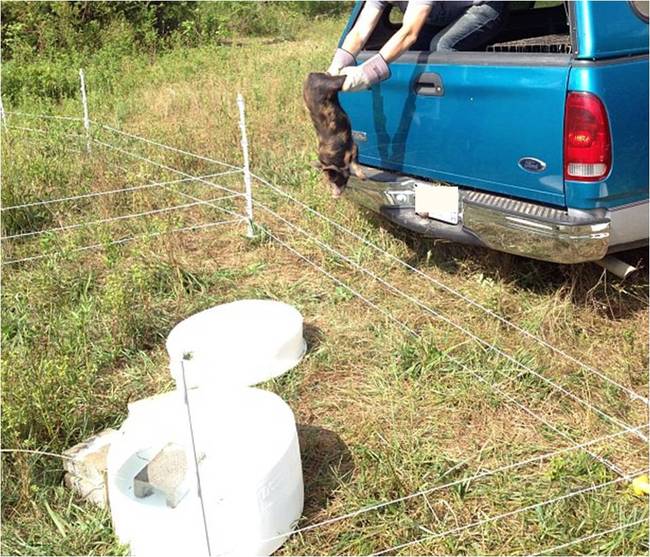 Releasing the Ossabaw pigs into their paddocks
Releasing the Ossabaw pigs into their paddocks
When we started down the road of farming we wanted to raise animals that could survive well on their own. With pigs that’s almost a zero possibility proposition. There aren’t wild pigs out there that you can control on your property and rely on them eating only what your forests, orchards and fields naturally produce. You have to feed them something, or grow food for them. Fortunately, we have the dairy and pigs love the leftover whey from making cheese. Nine out of ten pounds of milk ends up as whey water, one pound ends up as cheese. That's a lot of waste at the average dairy. We aren't your average dairy. Our pigs will consume the whey and turn it into pastured and whey-fed pork. It’s a great combination and is one that dates back hundreds and hundreds of years. Many symbiotic relationships have been lost in the industrial farming world; we plan to bring them back.
However, according to studies we’ve read and farmers we’ve talked to whey can only realistically comprise 30-50% of their diet. Too much whey, like too much of anything, upsets the pigs bodily functions and leads to a soft and mushy meat. Just enough whey leads to a perfectly delicious and mildly sweet pork. So the pigs have to eat something else. Luckily, we have a lot of oak, hickory and walnut trees in our woodlots, so the pigs can harvest the nuts, or "mast", as it’s more correctly referred. Sounds nice, but the trees aren’t always producing nuts, so we have to fill the gap. Part of that will come through other natural forages that we plan to grow for them to harvest, like peas, root crops, corn and other vegetables. The remainder will be supplemented with as little local feed as possible. Luckily, we have a great local feed source and we can also get some from the Mennonites up the road.
